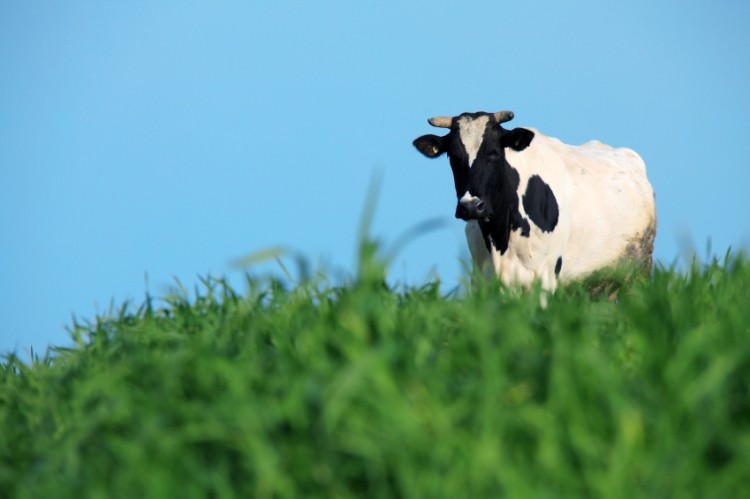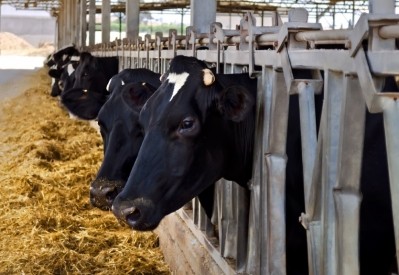Review: improving feed efficiency in dairy cows

Whilst means to improve feed efficiency in poultry, swine and beef cattle have been well documented, research focusing on feed efficiency of dairy cattle is less prevalent, according to the review, published in the journal Animal.
“One reason for the lag is that dairy cows present an additional challenge in estimating net feed efficiency because of the large fluctuations in their energy balance that occur throughout the annual lactation cycle,” wrote Erin Connor, a research molecular biologist at the USDA’s animal genomics and improvement laboratory and author of the review.
As a result, much debate persists on how best to evaluate feed efficiency in dairy cows and how to make genetic progress in efficiency-related traits without negatively impacting other traits.
At the same time, amid rising feed costs and mounting pressure on dairy producers to reduce the negative environmental impacts of their activities, feed efficiency is more important than ever.
“Improving feed efficiency among dairy cattle herds offers an opportunity to address both of these issues,” said Connor.
Given that growing heifers and dry cows often account for at least 25% of a typical dairy herd yet do not contribute to producer income, even small reductions in feed intake during dry periods can improve producer profitability, according to the review.
Measuring feed efficiency
The review examined several approaches for estimating feed efficiency in cattle, among them residual feed intake (RFI) - which is an estimate of net feed efficiency.
In simple terms, RFI is calculated as the difference between actual feed intake and predicted feed intake, based on a model that takes into account the requirement for energy to support body maintenance and production. A low or negative RFI is desirable.
Connor said that the biggest obstacle to assessing feed efficiency in dairy cows at present was the measurement of feed intakes in commercial operations, as this is both costly and impractical.
As an alternative to direct measurement, the review suggested the selection of other traits that have shown to be correlated with RFI, such as milk yield, body weight, chest width and stature, could lead to a genetic improvement in feed efficiency, or that estimates of feed efficiency obtained during heifer growth could be used to predict feed efficiency in mature cows.
An even more desirable and practical approach for identifying superior animals for feed conversion efficiency would be the use of biological or genetic markers, said Connor.
These would enable large numbers of animals to be screened rapidly from a milk or blood sample, but would still pose the problem of how to incorporate markers of improved RFI into a selection index that also maintains genetic progress in production traits.
The review suggests that, if proven to have sufficient accuracy, genomic selection for reduced RFI in dairy cattle provides the most practical approach to improve feed efficiency.
This is because it eliminates the need to collect phenotypes on each animal in the target population as is required to make genetic progress using traditional selection.
Other challenges around RFI
Besides the limited availability of data on feed intakes, there are several other challenges with the use of RFI to improve feed efficiency of dairy cattle, for example, obtaining more accurate estimates of the genetic relationship between RFI and other traits.
“Because of the large numbers of animals required, few studies to date have evaluated genetic correlations between RFI in lactating cows and other production traits of interest with sufficient numbers of animals to obtain reliable estimates which are greatly needed in order to understand correlated responses to selection,” wrote Connor.
A further challenge lies in determining which variables should be included in a standardized regression model for predicting feed intake of lactating cows across dairy cattle populations.
“Definitions of RFI across studies may also differ slightly, depending on the variables included in the regressional model to estimate predicted feed intake,” said the review.
Source: Animal
Invited review: “Improving feed efficiency in dairy production: challenges and possibilities”
Author: E.E. Connor
doi:10.1017/S1751731114002997














